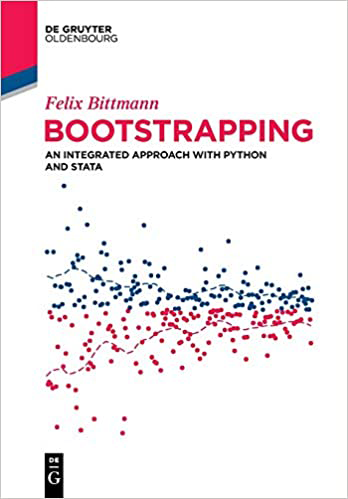Bootstrapping: An Integrated Approach with Python and Stata, by Felix Bittmann, is a great resource for students and researchers who want to learn and apply bootstrap methods.
The text begins with a clear introduction to foundational statistics on which bootstrapping methods rely. Bittmann then walks users through the logic behind bootstrapping as well as the process. The book includes discussion of confidence intervals and hypothisis testing as well as a chapter focused on bootstrap considerations related to regression models.
The final chapter demonstrates how researchers can perform bootstrapping using Stata and Python. Examples range from straightforward use of Stata’s bootstrap prefix and vce(bootstrap) option to more advanced techniques such as writing a program for resampling residuals. With this knowledge, readers will be ready to apply bootstrapping in their own analyses using Stata.
1.2 Standard deviation
1.3 Standard error
1.4 Confidence intervals
1.5 Applied example
1.6 P-values
1.7 Testing for normality
1.8 Probability density functions
1.9 Bias and variance
1.10 Normality and confidence intervals revisited
2.2 Requirements
2.3 Diagnostics
2.3.2 Distribution of bootstrap-results
2.3.3 Rate of convergence
2.5 Failures of the bootstrap
3.2 Percentile intervals
3.3 Bias corrected intervals (BC)
3.4 Bias corrected and accelerated intervals (BCa)
3.5 Double bootstrap
3.6 Transformations
3.7 Summary and simulation
4.2 Confidence intervals
4.3 Sampling in accordance with the null
4.4 Permutation tests
4.4.2 Boot or permute?
5.2 Sampling residuals
5.3 Dealing with outliers
5.4 Predicting outcomes and bagging
6.1.2 All confidence intervals
6.1.3 Permutation tests
6.1.4 Multithreading
6.1.5 Importing data
6.1.6 Appendix
6.2.2 Estimating models
6.2.3 Writing own programs
6.2.4 Permutation tests
6.2.5 Longitudinal and cluster analyses
6.4 Further reading

